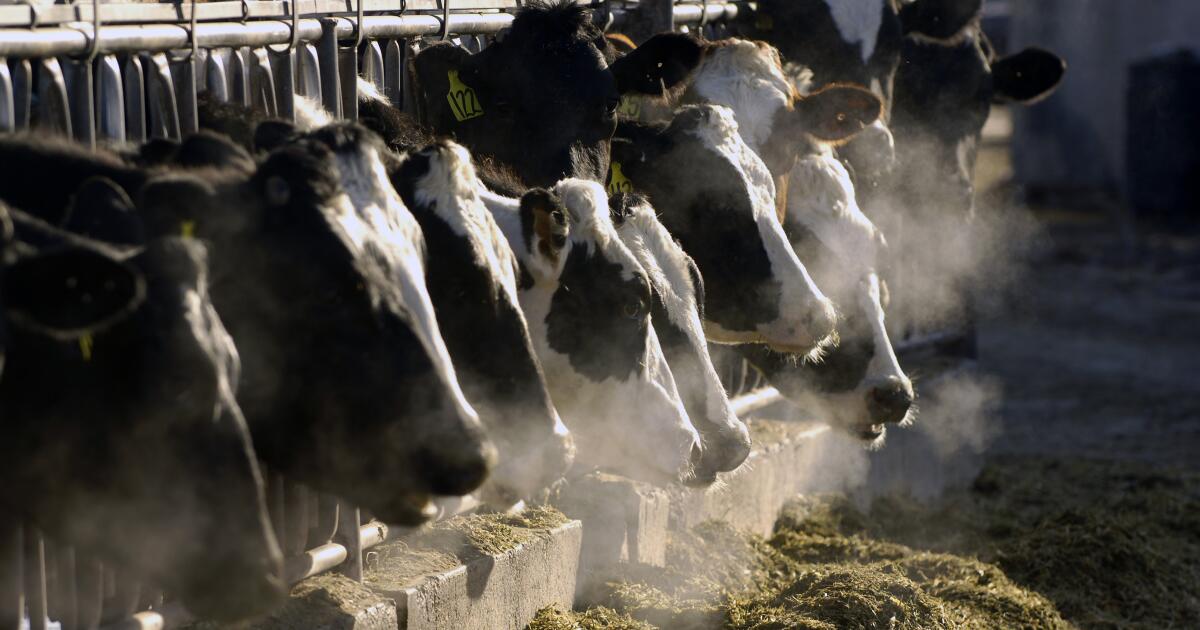Deadly Version of H5N1 Bird Flu Spills Over into Nevada Dairy Cattle
New Findings Raise Concerns about Virus’s Ability to Spread
A version of the H5N1 bird flu virus that killed a person in Louisiana and severely sickened a teenager in Canada has now been detected in dairy herds in Nevada. This new finding is significant because it suggests that the virus can spread from wild birds to dairy cattle, raising concerns about its potential to affect the dairy industry and public health.
Unprecedented Outbreak
The version of the virus, known as D1.1, is circulating in wild birds around the nation, causing massive die-offs in places such as Chicago, upstate New York, and Ohio. This is different from the version known to be circulating in dairy cows, which has caused only relatively mild illness in humans, although it has killed scores of domestic and wild cats. Both versions belong to the H5N1 virus family, each with slightly different histories and genetic structures.
Catch-22 Situation
The finding of D1.1 in dairy cows caught investigators off-guard, but it is also just the latest surprise as the H5N1 bird flu continues to flummox researchers and public health officials. “I can’t overemphasize what a big deal it is,” said John Korslund, a former USDA scientist. “This is truly a ‘s— show’ unfolding into a nightmare scenario. We have no idea how widespread this version of the virus already is in cattle herds. Every time poultry flocks break [with virus] we’ll need to investigate cattle contacts [which are many] as well as wild bird and other poultry contacts.”
Impact on Dairy Industry
Richard Webby, an influenza researcher at St. Jude Children’s Research Hospital, said while he thinks the findings are unlikely to change the risk outlook for the general population, it will affect the dairy industry. “It is likely that H5 viruses (such as H5N1 or the H5N9 virus recently found in a commercial duck operation in Merced County) ‘will continue to be generated in wild birds and will continue to spill over to dairy cows,'” he said. And some of these newer versions may have traits that allow them to spread more easily between cows — maybe via aerosols — or make the cows sicker.
Questions Remain
The discovery raises several questions that epidemiologists and health officials will need to address: How will it affect dairy workers? Dairy cows and feedlot cows? How about other livestock, such as swine, sheep, goats, and horses? What symptoms should farmers and veterinarians be on the lookout for? Will milk testing and reporting now require fields for both versions of the virus? Will herds who have been infected by B3.13 have immunity to D1.1?
Conclusion
The detection of D1.1 in dairy herds in Nevada is a stark reminder that the H5N1 bird flu is a highly unpredictable and adaptable virus. As researchers and public health officials continue to investigate and monitor the situation, it is essential to prioritize the health and safety of dairy workers, farmers, and the general public.
FAQs
* What is the H5N1 bird flu virus?
+ The H5N1 bird flu virus is a type of influenza A virus that affects birds and can also infect humans.
* What is the difference between the H5N1 virus and the D1.1 virus?
+ The H5N1 virus is a type of bird flu virus that has been detected in dairy cows, while the D1.1 virus is a specific version of the H5N1 virus that has been detected in dairy herds in Nevada.
* How can the virus spread from wild birds to dairy cattle?
+ The virus can spread from wild birds to dairy cattle through direct contact or indirect contact, such as through contaminated feed or water.
* What are the symptoms of H5N1 infection in humans?
+ The symptoms of H5N1 infection in humans can range from mild to severe and include fever, cough, and shortness of breath. In severe cases, the virus can cause pneumonia, respiratory failure, and even death.
* What is being done to monitor and control the spread of the virus?
+ Researchers and public health officials are working together to monitor the situation and take steps to prevent the spread of the virus. This includes testing and surveillance, as well as implementing measures to reduce the risk of transmission.


